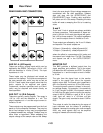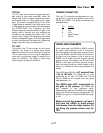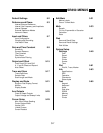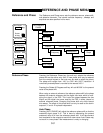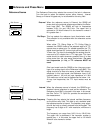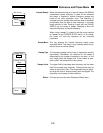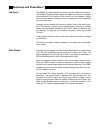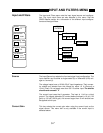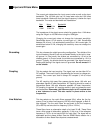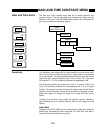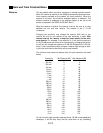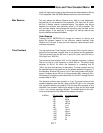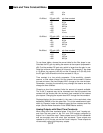
5-6
Reference and Phase Menu
Harmonic The SR850 can detect signals at harmonics of the reference frequency.
The SR850 multiplies the input signal with digital sine waves at a multiple
of the reference. Only signals at this harmonic will be detected. Signals
at the original reference frequency are not detected and are attenuated
as if they were noise.
Pressing this key selects the harmonic number field as the active entry
field. The harmonic number may be adjusted using the knob or entered
directly with the keypad. Harmonics up to 32767 times the reference can
be detected as long as the harmonic frequency does not exceed
102 kHz.
If the harmonic number is set to N then the reference frequency is limited
to 102 kHz/N.
The harmonic number is always displayed in the status bar at the bottom
of the screen.
Sine Output Pressing this key selects the Sine Output Amplitude as the active entry
field. The sine amplitude may be set from 4 mVrms to 5 Vrms. The
output impedance of the Sine Out is 50Ω. If the signal is terminated in
50Ω, the amplitude will be half of the programmed value.
When the reference mode is internal, this is the excitation source provid-
ed by the SR850. When an external reference is used, this sine output
provides a sine wave phase locked to the external reference. The SR850
provides a synchronous sinusoidal excitation signal even when an exter-
nal TTL reference is used.
The rear panel TTL Output provides a TTL square wave at the reference
frequency. This square wave is generated by discriminating the zero
crossings of the sine output. This signal can provide a trigger or sync
signal to the experiment when the internal reference source is used. This
signal is also available when the reference is externally provided. In this
case, the TTL Output is phase locked to the external reference.



